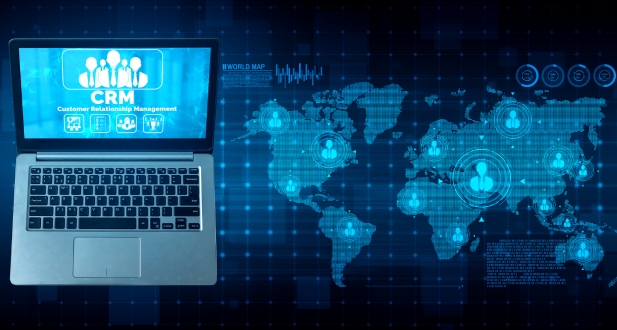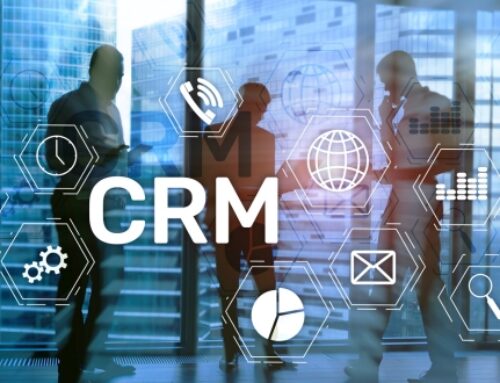Introduction of Salesforce CRM Retail Solutions
The Evolving Landscape of Retail: Challenges and Opportunities
The retail landscape is undergoing a seismic shift. Brick-and-mortar stores face mounting competition from online giants, evolving customer expectations demand personalized experiences, and data is becoming the new gold. In this dynamic environment, traditional transactional models are fading, replaced by a need to cultivate meaningful relationships with customers.
Challenges abound:
- Omnichannel integration: Seamlessly blending online and offline experiences to create a unified customer journey is crucial, yet many retailers struggle with siloed data and disparate platforms.
- Personalized engagement: Customers crave tailored interactions, product recommendations, and loyalty programs that resonate with their individual needs. Generic one-size-fits-all approaches fall short in today’s market.
- Operational efficiency: Streamlining workflows, managing inventory, and optimizing order fulfillment are critical for profitability, yet manual processes and data silos create inefficiencies and hinder growth.
- Data-driven insights: Turning customer data into actionable insights is key for informed decision-making, but many retailers lack the tools and expertise to extract its full potential.
But amidst these challenges, opportunities bloom:
- Building customer loyalty: By fostering genuine connections and personalized experiences, retailers can cultivate a loyal customer base that drives repeat business and brand advocacy.
- Enhanced operational agility: Streamlining processes, automating tasks, and gaining real-time data visibility empowers retailers to adapt quickly to changing market trends and customer demands.
- Data-driven decision making: Leveraging customer data to predict future trends, optimize pricing strategies, and personalize marketing efforts unlocks significant competitive advantages.
Why Salesforce CRM? A Powerful Platform for Enhanced Customer Engagement and Operational Efficiency
Salesforce CRM isn’t just a software; it’s a philosophy of customer-centricity. It empowers retailers to transform their business, move beyond transactions, and build lasting relationships with their customers.
Here’s what sets Salesforce CRM apart:
- 360° Customer View: Gain a holistic understanding of your customers, encompassing their purchase history, preferences, and interactions across all touchpoints.
- Personalized Engagement: Deliver targeted marketing campaigns, product recommendations, and loyalty programs that resonate with individual needs.
- Omnichannel Commerce Integration: Seamlessly connect online and offline channels, providing customers with a consistent and convenient shopping experience.
- Automated Workflows: Streamline routine tasks like order fulfillment, inventory management, and customer service, freeing up employees to focus on high-value interactions.
- Real-time Data Analytics: Gain actionable insights from your customer data to optimize pricing, marketing strategies, and resource allocation.
- Scalability and Adaptability: Easily adapt your CRM to accommodate changing business needs and customer demands.
Unleashing the Benefits: Improved Customer Experiences, Streamlined Processes, and Data-Driven Decision Making
By embracing Salesforce CRM, retailers can unlock a treasure trove of benefits:
- Enhanced customer satisfaction and loyalty: Personalized interactions, proactive service, and relevant recommendations lead to happier and more engaged customers.
- Increased operational efficiency: Streamlined workflows, automated tasks, and real-time data visibility reduce costs and improve profitability.
- Data-driven decision making: Actionable insights empower retailers to make informed choices about pricing, inventory management, marketing campaigns, and resource allocation.
- Improved ROI and profitability: Increased customer satisfaction, loyalty, and operational efficiency translate to measurable gains in revenue and profitability.
Salesforce CRM is not a magic wand, but it is a powerful tool that can help retailers reimagine their business, build stronger customer relationships, and thrive in the ever-evolving landscape of retail.
Key Salesforce CRM Features for Retail Businesses
With the challenges and opportunities of the modern retail landscape laid out, let’s dive into the specific functionalities of Salesforce CRM that can empower your business to thrive. This arsenal of features is designed to address your unique needs and elevate your customer experience.
- Customer Engagement and Relationship Management:
- Nurture connections: Build trust through personalized communication channels like email, SMS, and social media.
- Proactive service: Identify and address customer needs before they arise with automated alerts and case management.
- 360° customer view: Gain a holistic understanding of each customer’s preferences and purchase history, allowing for targeted interactions and recommendations.
- Loyalty programs: Foster repeat business with engaging programs, points systems, and exclusive offers.
- Public Service Management:
- Streamline workflows: Automate tasks like order fulfillment, inventory management, and customer service inquiries, freeing up employees for higher-value interactions.
- Optimize resource allocation: Gain real-time data insights to allocate staff and resources efficiently based on demand and service needs.
- Improved service delivery: Reduce wait times, minimize errors, and provide consistent experiences across all touchpoints.
- Data Analytics and Reporting:
- Turn data into insights: Analyze customer interactions, service performance, and program data to identify trends, predict future behavior, and make informed decisions.
- Actionable dashboards: Track key metrics and visualize performance in real-time to make data-driven adjustments and optimize strategies.
- Predictive analytics: Anticipate customer needs, predict demand fluctuations, and optimize pricing and inventory based on data insights.
- Omnichannel Commerce Integration:
- Seamless customer journey: Connect online and offline channels, allowing customers to browse, purchase, and interact seamlessly across platforms.
- Synchronized inventory: Maintain real-time inventory visibility across all channels to avoid overselling and ensure product availability.
- Personalized omnichannel experiences: Deliver targeted recommendations and promotions based on online browsing behavior and purchase history.
- Inventory and Order Management:
- Optimize stock levels: Utilize forecasting tools and data analysis to predict demand and maintain optimal inventory levels, minimizing costs and avoiding stockouts.
- Streamline order fulfillment: Automate order processing, tracking, and shipping, reducing errors and improving delivery speed.
- Real-time visibility: Gain instant insights into inventory levels, order status, and delivery progress across all channels.
- Marketing Automation and Personalization:
- Targeted campaigns: Deliver personalized email marketing, social media campaigns, and advertising based on customer demographics, purchase history, and preferences.
- Content personalization: Tailor website content, product recommendations, and offers to individual customer profiles, increasing engagement and conversion rates.
- Automated nurturing campaigns: Trigger automated email sequences based on customer behavior, such as abandoned cart recovery or personalized product recommendations.
- Loyalty and Rewards Programs:
- Build customer loyalty: Design engaging loyalty programs with points systems, tiered rewards, and exclusive benefits to incentivize repeat purchases and brand advocacy.
- Personalized rewards: Offer targeted rewards and incentives based on individual customer preferences and purchase history, making the program more valuable and engaging.
- Track program performance: Analyze program data to measure engagement, effectiveness, and ROI, allowing for continuous optimization and improvement.
- Predictive Analytics and Forecasting:
- Anticipate customer needs: Utilize predictive analytics to understand customer behavior and predict future purchase patterns, allowing you to tailor product offerings, promotions, and marketing campaigns.
- Optimize pricing strategies: Dynamically adjust pricing based on demand, competitor analysis, and customer segmentation to maximize revenue and profitability.
- Forecast future trends: Predict seasonal fluctuations, upcoming product launches, and broader market trends to inform strategic planning and resource allocation.
- AI-powered Customer Service:
- Personalize interactions: Utilize AI-powered chatbots and virtual assistants to offer personalized support, answer FAQs, and resolve common issues 24/7.
- Automate routine tasks: Free up human agents for complex inquiries by automating repetitive tasks like order tracking and basic troubleshooting.
- Improve customer satisfaction: Offer faster response times, 24/7 availability, and personalized support, leading to higher customer satisfaction and loyalty.
These features, when combined with the data-driven insights and automation capabilities of Salesforce CRM, provide a powerful toolkit for retail businesses to navigate the evolving landscape and thrive in the digital age.
Unleashing the Potential: Beyond Efficiency, Transforming Retail with Salesforce CRM
Embracing Salesforce CRM isn’t just about streamlining processes and boosting efficiency; it’s about a fundamental shift in how you engage with customers, manage your operations, and ultimately, transform your retail business. Let’s delve into the tangible benefits that await your journey with Salesforce CRM:
- Enhanced Customer Experiences:
- Personalization at every touchpoint: Recommend products, deliver targeted promotions, and offer tailored support based on individual preferences and purchase history, fostering deeper connections and building brand loyalty.
- Proactive service that anticipates needs: Leverage data insights to identify potential issues and proactively address them before they become problems, exceeding customer expectations and creating lasting positive impressions.
- Omnichannel convenience and consistency: Seamlessly connect online and offline touchpoints, allowing customers to browse, purchase, and interact with your brand effortlessly across all channels, creating a unified and convenient shopping experience.
- Streamlined Operations and Increased Productivity:
- Automated tasks and workflows: Free up your team from manual processes by automating routine tasks like order fulfillment, inventory management, and customer service inquiries. This empowers employees to focus on high-value interactions and strategic initiatives.
- Reduced data silos and improved visibility: Break down data silos and gain real-time insights into your entire operation, from inventory levels to customer interactions, enabling data-driven decision making and optimizing resource allocation.
- Empowered employees and improved morale: Equip your team with the tools and information they need to succeed. Easy-to-use interfaces and real-time data access empower employees to make informed decisions and provide exceptional customer service, boosting morale and engagement.
- Data-Driven Decision Making:
- Actionable insights from customer data: Gain a deep understanding of your customer base, their preferences, and buying behaviors. Use this data to optimize pricing strategies, personalize marketing campaigns, and predict future trends, ensuring your decisions are informed and effective.
- Predictive analytics and forecasting: Anticipate demand fluctuations, identify potential stockouts, and optimize inventory levels based on data-driven insights. This minimizes costs and ensures you have the right products available when your customers need them.
- Improved ROI and measurable results: Track the impact of your CRM implementation through key performance indicators (KPIs). Monitor customer satisfaction, loyalty, sales figures, and operational efficiency to demonstrate a clear return on investment (ROI) and justify your CRM investment.
- Enhanced Collaboration and Communication:
- Break down departmental barriers: Foster seamless communication and collaboration between departments, from marketing and sales to inventory management and customer service. This ensures everyone is working towards shared goals and provides a unified customer experience.
- Real-time information sharing: Streamline communication with real-time data updates and collaboration tools, allowing teams to share information instantly and make informed decisions based on the latest insights.
- Improved transparency and accountability: With everyone working on a central platform, accountability increases, and transparency improves, fostering a more collaborative and efficient work environment.
- Scalability and Adaptability:
- Easily accommodate business growth: Salesforce CRM scales with your business, allowing you to add users and functionalities as your needs evolve. This ensures your CRM solution supports your growth and remains relevant as your business expands.
- Adapt to changing market trends: In the dynamic retail landscape, agility is key. Salesforce CRM’s flexible platform allows you to easily adapt your strategies and processes to meet changing customer demands and market trends, ensuring you stay ahead of the curve.
- Continuous innovation and improvement: Salesforce is constantly evolving, offering new features and functionalities to stay at the forefront of technological advancements. This ensures your CRM solution remains relevant and provides you with the latest tools to thrive in the competitive retail landscape.
Implementing Salesforce CRM is not a one-time project, but a continuous journey of transformation. By embracing its potential and utilizing its features effectively, you can move beyond mere operational efficiency and redefine your relationship with customers. In the next section, we’ll explore the practical steps you can take to implement Salesforce CRM successfully and navigate potential challenges along the way.
A Roadmap for Successful Salesforce CRM Implementation
Transforming your retail business with Salesforce CRM isn’t just about acquiring the technology; it’s about building a champion within your organization. This champion, fueled by clear goals, effective training, and a strategic approach, will guide your implementation journey and ensure you reap the full benefits of your investment.
- Assessing Needs and Defining Success Metrics:
- Identify your pain points: Analyze your current operations, pinpoint inefficiencies, and understand where your customers’ experiences fall short. These pain points will form the foundation for your CRM goals.
- Set clear and measurable goals: Align your CRM objectives with your overall business strategy. Do you seek to boost customer retention by 15% or streamline order fulfillment by 20%? Clearly defined goals will keep your implementation focused and provide benchmarks for success.
- Communicate and gain buy-in: Share your vision and goals with key stakeholders across all departments. Their understanding and support are crucial for a smooth and successful implementation.
- User Training and Adoption:
- Build a culture of CRM champions: Identify enthusiastic individuals from across departments who will become your CRM champions. Equip them with the knowledge and expertise to advocate for the system and train their colleagues.
- Provide comprehensive training: Offer tailored training programs based on user roles and functionalities. Hands-on workshops, bite-sized learning modules, and ongoing support will ensure user confidence and proficiency.
- Address resistance to change: Empathize with user concerns and address them proactively. Showcase the benefits of CRM and how it will empower them to do their jobs better.
- Data Migration and Integration:
- Connect your legacy systems: Seamlessly integrate Salesforce CRM with your existing inventory management, marketing automation, and customer service platforms. This creates a unified data ecosystem and eliminates data silos.
- Ensure data accuracy and completeness: Implement data cleansing and validation processes to ensure the quality and reliability of your CRM data. Accurate data is the foundation for effective decision-making.
- Plan for smooth migration: Develop a phased migration strategy to minimize disruption to your operations. Start with core functionalities and gradually migrate more complex data and workflows.
- Change Management and Ongoing Optimization:
- Address resistance to change: Proactively identify and address user concerns and anxieties related to the new system. Communication, transparency, and ongoing support are key to overcoming resistance.
- Monitor progress and adapt: Regularly track your progress against your KPIs and adapt your strategies as needed. Don’t be afraid to course-correct if challenges arise.
- Continuous optimization: Embrace the iterative nature of CRM implementation. Constantly seek feedback from users, analyze data, and identify opportunities for improvement. This ensures your CRM remains relevant and delivers ongoing value.
By following this roadmap, you can build a strong foundation for your Salesforce CRM implementation, overcome potential challenges, and empower your team to unlock the full potential of this transformative technology. Remember, successful CRM implementation is a journey, not a destination. Embrace the process, learn, adapt, and celebrate your progress along the way.
Addressing Common Challenges in Retail CRM Implementation
The path to CRM implementation glory isn’t always paved with roses. Even with a well-defined strategy, mountains can rise in the form of unforeseen challenges. But fear not, intrepid retail champion, for with the right tools and tactics, you can conquer these hurdles and reach the peak of CRM success.
- Data Migration Hurdles:
- Data cleansing: Legacy systems often harbor inaccuracies and inconsistencies. Implement data cleansing tools and processes to ensure accurate data transfer and prevent downstream problems.
- Phased migration: Don’t attempt to migrate everything at once. Break down the process into manageable phases, prioritizing critical data and functionalities.
- Data validation: Verify data integrity at each stage of the migration process. Employ data validation tools and conduct thorough testing to identify and rectify errors before they impact your CRM.
- User Resistance and Change Management:
- Communication and transparency: Clearly communicate the benefits of CRM and address concerns head-on. Open communication fosters trust and reduces resistance.
- Training and support: Provide comprehensive training tailored to different user roles. Offer ongoing support to ensure confidence and address user queries promptly.
- Champion network: Build a network of CRM champions who can evangelize the system and encourage user adoption.
- Integration Woes:
- System mapping: Clearly map out the data flows and integrations required between Salesforce CRM and your existing systems. This ensures smooth communication and avoids data silos.
- API expertise: Partner with experienced CRM consultants who possess expertise in API integrations specific to your retail systems.
- Phased approach: Implement integrations in phases, starting with core functionalities and gradually adding more complex integrations as your team gains confidence.
- Budget Constraints:
- Quantify the ROI: Demonstrate the potential return on investment (ROI) of CRM implementation through cost savings, increased revenue, and improved operational efficiency. This strengthens the case for budget allocation.
- Phased implementation: Start small and scale up gradually. This allows you to demonstrate success with a smaller investment, securing buy-in for further expansion.
- Subscription model: Consider subscription-based CRM solutions to avoid large upfront costs and maintain flexibility as your business grows.
- Lack of Strategic Planning:
- Define clear goals: Align your CRM goals with your overall business objectives. What are you trying to achieve with CRM implementation? Increased customer loyalty? Streamlined operations? Clearly defined goals guide the entire process.
- Stakeholder buy-in: Secure buy-in from all key stakeholders across departments. Their involvement ensures a unified approach and facilitates a smoother implementation journey.
- Develop a roadmap: Create a detailed implementation roadmap with timelines, milestones, and responsibilities assigned. This keeps everyone on track and prevents detours.
By acknowledging these potential challenges and equipping yourself with the right strategies, you can navigate the treacherous terrain of CRM implementation and emerge victorious, ready to reap the rewards of a thriving retail business powered by Salesforce CRM.
Emerging Trends Shaping the Future of Retail CRM
The crystal ball of retail CRM reveals a dazzling future, where technology will blur the lines between the physical and digital, reshape customer experiences, and empower retailers to operate with unprecedented efficiency and insight. Let’s peek into a few prominent trends poised to transform the landscape:
- Artificial Intelligence (AI): Your Customer’s Loyal Sidekick:
- Personalized engagement on steroids: Imagine AI-powered chatbots understanding your customers’ moods, preferences, and purchase history, offering proactive recommendations and resolving issues in real-time. This hyper-personalized touch will redefine customer service and loyalty.
- Predictive analytics that paint the future: Forget crystal balls, your CRM will predict future trends like a seasoned oracle. AI will analyze customer data and market signals to forecast demand, optimize pricing strategies, and tailor marketing campaigns for maximum impact.
- Automating the mundane, elevating the human: From inventory management to order fulfillment, AI will handle repetitive tasks, freeing up your teams to focus on high-value interactions and building deeper customer relationships.
- AR & VR: Shopping Without Leaving Your Couch:
- Step into a virtual wonderland: Virtual showrooms will let customers explore products in 3D, try on clothes virtually, and decorate their homes before they buy. Forget brick-and-mortar limitations, AR and VR will bring the store to your living room.
- Personalized product recommendations powered by sight: Imagine your CRM analyzing your browsing history and suggesting products that perfectly match your style and preferences, all visualized seamlessly through AR overlays on your phone or glasses.
- Gamified shopping experiences: Gamification elements like rewards, points, and personalized challenges will not only engage customers but also gather valuable data on their preferences and buying behavior.
- Blockchain: Building Trust, One Block at a Time:
- Data security you can bank on: Secure and transparent data sharing through blockchain technology will foster trust with customers, especially when it comes to sensitive information like loyalty programs and payment details.
- Streamlined supply chains with enhanced visibility: Track your products from farm to shelf in real-time, optimizing logistics, minimizing waste, and ensuring ethical sourcing through the power of blockchain-based data sharing.
- Personalized loyalty programs with no room for fraud: Imagine tamper-proof loyalty programs backed by blockchain, rewarding customers with secure, transparent, and personalized loyalty experiences.
- The Rise of the Intelligent CRM: Your Retail Brain Trust:
- Proactive support before issues arise: Imagine your CRM predicting customer needs and proactively addressing them before they become problems. This intelligent system will anticipate returns, suggest alternative products, and offer support based on individual customer data.
- Hyper-personalized interactions built on data: Every interaction, from website recommendations to email campaigns, will be laser-focused on individual customer preferences and purchase history. This level of personalization will create lasting connections and drive loyalty.
- Data-driven decision making at the speed of light: Forget gut feelings, your CRM will become your ultimate decision-making engine. Real-time data analysis will inform pricing strategies, marketing campaigns, and resource allocation, ensuring every decision is data-driven and optimized for success.
The future of retail CRM is a kaleidoscope of possibilities, where technology will empower deeper customer connections, streamline operations, and unlock unprecedented insights. By embracing these emerging trends and aligning your CRM strategy with their potential, you can position your retail business for a future that is not only profitable but also customer-centric and truly transformative.
Conclusion
In conclusion, Salesforce CRM Retail Solutions stand as a transformative force in the retail industry, offering a comprehensive suite of tools and functionalities to enhance customer experiences, streamline operations, and drive business growth. By seamlessly integrating with various retail systems, Salesforce CRM empowers retailers to gain valuable insights into customer behaviors, optimize inventory management, and personalize marketing strategies.
The robust features, including order management, customer relationship management, and analytics, enable retailers to adapt to the dynamic market landscape. Salesforce CRM’s emphasis on customization ensures that it aligns with the specific needs and workflows of individual retail businesses.
As the retail sector continues to evolve, Salesforce CRM remains at the forefront of innovation, addressing emerging trends and technological advancements. Its ability to provide a unified platform for managing diverse retail operations positions it as a valuable asset for retailers aiming to stay competitive in the digital era. In essence, Salesforce CRM Retail Solutions contribute to building stronger customer relationships, fostering operational efficiency, and ultimately driving success in the rapidly changing retail landscape.









